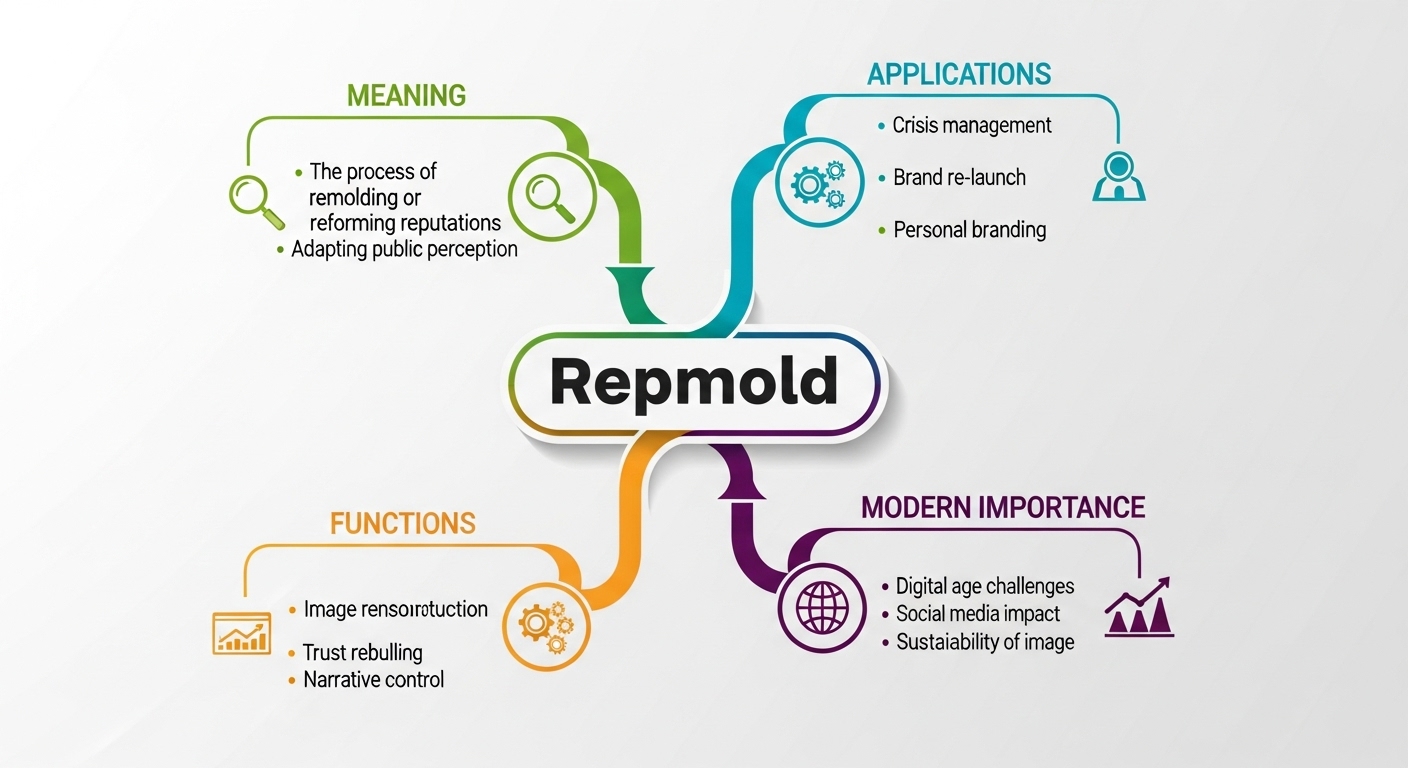Repmold is a distinctive term that captures attention due to its industrial, technical, and conceptual potential. While the word may not be widely recognized in general vocabulary, its structure suggests associations with replication, molding, shaping, and forming processes. Many industries today depend on methods that involve producing identical models, shaping materials, or crafting components with precision, and a term like Repmold fits naturally into such environments. Because of its modern sound and adaptable concept, Repmold is increasingly being used in various discussions, creative fields, and developmental contexts.
Understanding the Concept of Repmold
At its core, the word Repmold appears to combine two ideas: replication and molding. This gives it a flexible identity that can refer to processes, tools, technologies, or even creative principles where shaping, forming, or reproducing something is essential. In technical fields, molding refers to forming materials using specific designs, while replication refers to creating duplicates with accuracy. Together, these ideas suggest a system or method centered on precision, structure, and productivity.
Industrial Use and Relevance of Repmold
Manufacturing industries heavily rely on molding and replication. Whether in automotive production, plastic manufacturing, metal casting, or design engineering, the process of creating identical models is essential. Repmold can describe a category of tools, machines, or technological systems that allow manufacturers to produce consistent and high-quality forms. Such systems improve efficiency, reduce errors, and support large-scale production. Industries benefit greatly from reliable molding techniques because they ensure uniformity across thousands of products.
Repmold in Modern Technology
With advancements in automation and digital design, the concept behind Repmold fits well into modern technological trends. Technologies like 3D printing, computer-aided design, and automated manufacturing involve replicating designs with precise accuracy. Repmold can represent an approach or principle in these systems where digital blueprints are used to mold and replicate items seamlessly. This approach supports innovation by reducing the gap between concept and creation, allowing faster development and testing of new products.
Creative Applications of Repmold
Beyond manufacturing, Repmold also carries value in creative fields. Artists, designers, and model makers often use molding and replication techniques to produce sculptures, props, prototypes, decorations, and artistic duplicates. Even in filmmaking and game design, the principle of Repmold can describe the process of creating detailed models or repeated elements. The flexibility of the term helps creators describe their workflow in a simple and modern way, making it suitable for artistic and technical discussions alike.
Symbolic Interpretation of Repmold
Some people may interpret Repmold symbolically, viewing it as a representation of shaping ideas, transforming concepts, or building identities. In a broader sense, the act of molding something can symbolize development, while replication can signify consistency. When combined, Repmod can be used metaphorically to describe growth, learning, or creating multiple pathways from one strong foundation. Such symbolic uses make the term appealing in motivational, educational, or psychological contexts as well.
Importance of Repmold in Product Development
Modern product development requires rapid prototyping, testing, and revision. Repmold processes support this cycle by enabling designers to mold and reproduce models quickly. When teams can create multiple prototypes, they can evaluate design flaws, improve functionality, and finalize products much faster. This leads to shorter development times, reduced costs, and improved innovation. Many industries today value these benefits, making Repmod-like systems essential in achieving competitive performance.
Repmold in Digital and Virtual Spheres
In virtual environments such as video games, simulations, and digital design programs, replication and model-building are fundamental. Developers often create repeated structures, characters, props, or landscapes. The concept of Repmold fits naturally in these spaces because it reflects the process of shaping and duplicating virtual items. As digital creativity expands, names like Repmod become useful in describing tools, processes, and frameworks that contribute to virtual production.
Future Potential of the Term Repmold
With continuous advancements in technology, engineering, and creativity, terms that represent shaping and replication will remain relevant. Repmod has the potential to evolve further as industries adopt new methods of manufacturing and digital modeling. Its broad interpretation makes it suitable for branding, tool naming, industrial labeling, or even fictional world-building. As more creators and developers explore new ways to form and replicate structures, Repmod could become a recognized term in multiple fields.
Conclusion
Repmold is a versatile and modern concept that blends the ideas of molding and replication into a single, impactful term. Whether applied in industrial manufacturing, creative design, digital modeling, or symbolic interpretation, it represents processes that focus on shaping, forming, and duplicating with precision. As industries and creative fields continue to advance, the potential of Repmod grows even stronger. Its adaptable nature makes it a valuable term for describing innovation, production, and creative expression in the modern era.

